Chugoku and more
- Sort by
- Popularity
- Name
-
Imari ware/Arita ware Imari yaki Arita yaki
- Ceramic
- Saga
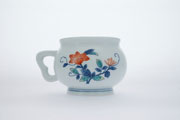
Imari ware and Arita ware are both porcelain produced around the town of Arita, in the Saga prefecture. Imari ware and Arita ware are light and delicate and both have excellent durability because their porcelain is produced from porcelain stone. T…
View more
-
Hasami ware Hasami yaki
- Ceramic
- Nagasaki
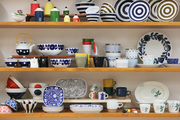
Hasami ware (called Hasami yaki in Japanese) is a form of porcelain produced in Hasami in Nagasaki prefecture. It is a traditional handicraft that was first produced in the latter part of the Sengoku period (1467-1603) and remains popular today as…
View more
-
Kumano brushes Kumano fude
- Writing tools
- Hiroshima
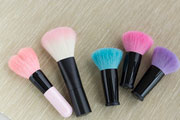
Kumano brushes (called Kumano fude in Japanese) are traditional craftworks produced in the city of Kumano in Hiroshima prefecture, hence the name. They are made from a wide variety of hair including goat, horse, deer, Japanese raccoon dog, weasel,…
View more
-
Bizen ware Bizen yaki
- Ceramic
- Okayama

Bizen ware (called Bizen yaki in Japanese) is a form of pottery produced in the area around the city of Bizen in Okayama prefecture. Bizen ware is one of Japan's Six Ancient Kilns. Together with Shigaraki, Tamba, Echizen, Seto and Tokoname, B…
View more
-
Hagi ware Hagi yaki
- Ceramic
- Yamaguchi
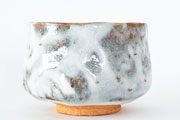
Hagi ware (called Hagi yaki in Japanese) is a form of porcelain produced mainly in the city of Hagi in Yamaguchi prefecture. Hagi ware is rarely decorated, remaining as simple as possible to make the most of the features of the clay. This simplici…
View more
-
Koishiwara ware Koishiwara yaki
- Ceramic
- Fukuoka

Koishiwara ware (called Koishiwara yaki in Japanese) is a form of pottery produced in the Asakura district of Fukuoka prefecture. Since its creation, Koishiwara ware has evolved to become a practical, beautiful pottery. Koishiwara ware's uniq…
View more
-
Hakata doll Hakata ningyo
- Dolls, kokeshi
- Fukuoka
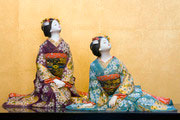
Hakata dolls (called Hakata ningyo in Japanese) are unglazed clay dolls produced in the city of Hakata, in Fukuoka prefecture. The notable features of Hakata dolls are their subtle soft colors, delicately carved expressions, and curves that almost…
View more
-
Karatsu ware Karatsu yaki
- Ceramic
- Saga
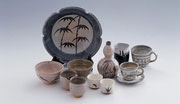
Karatsu ware (called Karatsu yaki) is a form of porcelain produced in the Saga and Nagasaki prefectures. This traditional craft has been produced since the 16th century in various forms, including tea bowls. One of the most notable features of Kar…
View more
-
Kurume traditional resist-dyed textiles Kurume gasuri
- Woven textiles
- Fukuoka

Kurume traditional resist-dyed textiles (Kurume gasuri in Japanese) is a woven cloth produced in and around the city of Kurume, Fukuoka prefecture. The breathability assures coolness in the summer and excellent heat-retaining properties provide wa…
View more
-
Hakata brocade Hakata ori
- Woven textiles
- Fukuoka
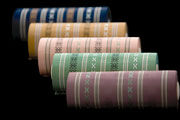
Hakata ori refers to the ori or woven cloth produced in and around Hakata, Fukuoka prefecture. Hakata weaving techniques, which originated in China, have shaped this unique cloth. It has been highly regarded for its high quality throughout the age…
View more
-
Satsuma ware Satsuma yaki
- Ceramic
- Kagoshima
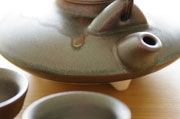
Satsuma ware (called satsuma yaki in Japanese) is a form of porcelain produced in Kagoshima prefecture. There are three types of Satsuma ware: white, black, and porcelain. Then there are six categories: tateno, ryumonji, naeshirogawa, nishimochida…
View more
-
Mikawachi ware Mikawachi yaki
- Ceramic
- Nagasaki
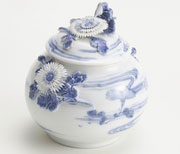
Mikawachi ware (called Mikawachi yaki in Japanese) is a form of porcelain produced around the city of Sasebo, in Nagasaki prefecture. Mikawachi ware has long been regarded as a high-class item due to its simple yet eyecatching blue dye on white po…
View more
-
Agano ware Agano yaki
- Ceramic
- Fukuoka
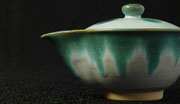
Agano ware (called Agano yaki) is a form of pottery produced around the town of Fukuchi in Fukuoka prefecture. Agano ware is elegant and lightweight, stemming from its development as a tea bowl for use in tea ceremonies. In some cases, the foot o…
View more
-
Beppu bamboo crafts Beppu take zaiku
- Wood, bamboo crafts
- Oita
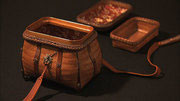
Beppu take-zaiku are bamboo crafts produced in the city of Beppu, Oita prefecture mainly from odake bamboo* grown and harvested locally. This craft is entirely handmade and uses a distinctive range of basic weaving techniques. It is also the only …
View more
-
Sekishu traditional Japanese paper Sekishu washi
- Traditional Japanese paper
- Shimane
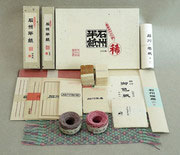
Sekishu washi is a traditional Japanese paper produced in the Iwami region of Shimane prefecture. As an ancient craft, it has a history of around 1300 years. The name Sekishu is found in writings from the Heian period (794-1185). There is also a s…
View more
-
Shodai ware Shodai yaki
- Ceramic
- Kumamoto
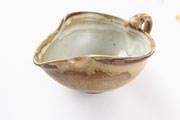
Shodai ware (called Shodai yaki in Japanese) is a form of pottery baked mainly in the northern part of Kumamoto prefecture. This craft is distinguishable because of its simple texture, strong form, and bold design, which is due to the pouring meth…
View more
-
Yamaga lanterns Yamaga toro
- Other crafts
- Kumamoto
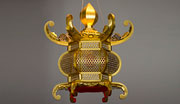
Yamaga toro are lanterns made of washi (traditional Japanese paper) produced in the area surrounding the city of Yamaga, Kumamoto prefecture. For the Yamaga Lantern Festival, an annual summer event, this craft is worn by one thousand dancing women…
View more
-
Akama inkstone Akama suzuri
- Writing tools
- Yamaguchi

Akama inkstone (called Akama suzuri in Japanese) is produced around the cities of Shimonoseki and Ube in Yamaguchi prefecture. A type of stone called akama, an ideal material for producing the inkstones, is used for Akama inkstone. Therefore this …
View more
-
Inshu traditional Japanese paper Inshu washi
- Traditional Japanese paper
- Tottori
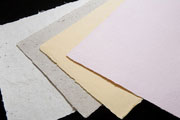
Inshu washi is a handmade traditional Japanese paper made in the former Inaba province, the eastern part of Tottori prefecture. The most famous type of paper is a textured drawing paper that is ideal for calligraphy and ink painting, boasting high…
View more
-
Unshu abacus Unshu soroban
- Writing tools
- Shimane
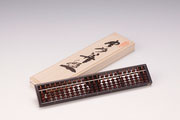
Unshu abacuses (called Unshu soroban in Japanese) are produced in the town of Okuizumo, Shimane prefecture. Japanese abacuses are traditional tools that use columns lined with beads that are quickly moved with the fingers to do calculations. They …
View more
-
Ouchi lacquerware Ouchi nuri
- Lacquerware
- Yamaguchi

Ouchi lacquerware (called Ouchi nuri in Japanese) is produced around the city of Yamaguchi, in Yamaguchi prefecture. This craft emerged under the Ouchi clan, which boasted significant influence and power in the region during the Muromachi period (…
View more
-
Yumihama traditional resist-dyed textiles Yumihama gasuri
- Woven textiles
- Tottori
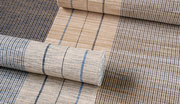
Yumihama traditional resist-dyed textiles (called Yumihama gasuri in Japanese) is produced near the city of Sakaiminato, Tottori prefecture. The name comes from Yumigahama, which is a curved shore that stretches for more than twenty kilometers (ab…
View more
-
Honba oshima tsumugi silk Honba oshima tsumugi
- Woven textiles
- Kagoshima
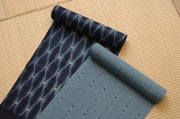
Honba Oshima Tsumugi is a fabric made on the island of Amami, Kagoshima prefecture. It is one hundred percent plain silk that has been dyed and made on handlooms like shime-bata or te-bata. This textile has deep, muted tones as it is dyed with ye…
View more
-
Iwami ware Iwami yaki
- Ceramic
- Shimane
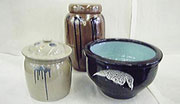
Iwami ware (called Iwami yaki) is a type of pottery produced around the city of Gotsu, Shimane prefecture. Iwami ware is strong, has low water absorbency and is resistant to salt, acid, and alkali which makes it suitable for storing pickled plums …
View more
-
Yame lanterns Yame chochin
- Other crafts
- Fukuoka
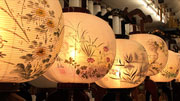
Yame Lanterns (called Yame Chochin in Japanese) are a type of lantern craft produced in the region around Yame, Fukuoka prefecture. This craft has a bamboo frame and a fire box with beautifully painted flowers, birds, and plants. The bamboo frame …
View more
-
Amakusa ceramics Amakusa tojiki
- Ceramic
- Kumamoto
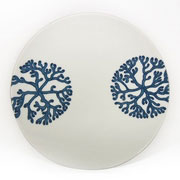
Amakusa ware (called Amakusa Tojiki in Japanese) is a form of pottery or porcelain baked in the Amakusa region of Kumamoto prefecture. The name was newly applied when the craft was designated as a national traditional craft. In Amakusa, where high…
View more
-
Miyakonojo archery bows Miyakonojo daikyu
- Wood, bamboo crafts
- Miyazaki
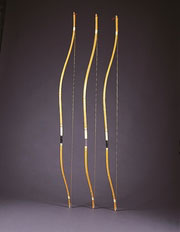
Miyakonojo Bows (called Miyakonojo Daikyu in Japanese) are bamboo archery bows produced in Miyakonojo, Miyazaki prefecture. The Miyakonojo area is known for growing high quality bamboo and has produced a variety of weapons like wooden swords as w…
View more
-
Fukuyama Koto (Japanese Harp) Fukuyama koto
- Other crafts
- Hiroshima
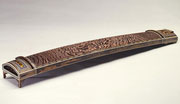
Fukuyama koto is a Japanese harp, koto, produced in Fukuyama, Hiroshima prefecture. Most of the koto produced in Japan are made in Fukuyama, which is where the coastal view of the city inspired one of the most well-known koto songs, Haru no Umi (S…
View more
-
Kawanabe Buddhist altar Kawanabe butsudan
- Household Buddhist altars
- Kagoshima
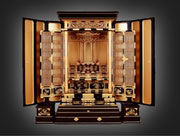
Kawanabe Buddhist Altars (called Kawanabe Butsudan in Japanese) are made in the Kawanabe area of Minamikyushu, Kagoshima prefecture. There is a specific type of altar called gamado that is unique to this craft. Gama means cave in the Kagoshima dia…
View more
-
Miyajima woodwork Miyajima zaiku
- Wood, bamboo crafts
- Hiroshima
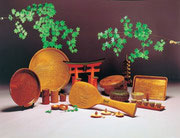
Miyajima Woodwork (called Miyajima zaiku in Japanese) are woodwork products made in Miyajima, Hatsukaichi, Hiroshima prefecture. Miyajima Island, one of the Three Views of Japan*, has long been nicknamed the "Island of Gods", while Hatsu…
View more































































































































































































































































































